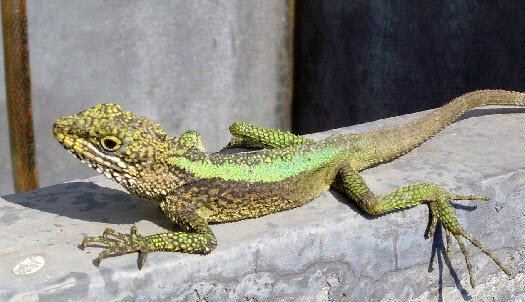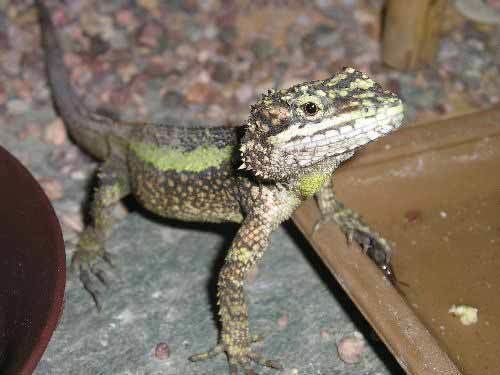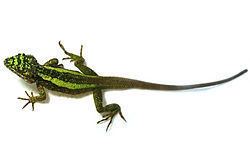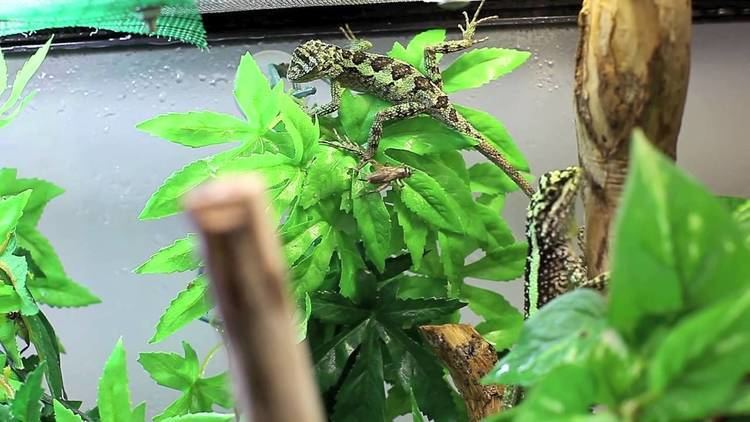Kingdom Animalia Class Reptilia Family Agamidae Scientific name Japalura splendida Rank Species | Subphylum Vertebrata Suborder Iguania Subfamily Draconinae Phylum Chordata Order Scaled reptiles | |
 | ||
Similar Japalura, Takydromus septentrionalis, Acanthosaura lepidogaster, Swinhoe's japalura, Takydromus formosanus | ||
Neon tree dragon japalura splendida update
Ploi. The Japalura Tree Dragon also called Banana Split Mountain Lizard, Chinese Tree Dragon, Dragon Agama, or Neon Tree Dragon, Japalura splendida is an agamid lizard found in southwestern China in the provinces of Hunan, Hubei, Guizhou, Yunnan, Sichuan, Gansu, and Henan, and also in the southeast of Tibet.
Contents
- Neon tree dragon japalura splendida update
- My japalura splendida s neon tree dragon s
- Purchasing a Japalura Splendida
- Housing and Habitat
- Feeding
- Determining Sex
- Breeding
- References

In captivity the Japalura tree dragon requires a warm, humid environment. They are an active and arboreal species, and should only be kept in a medium to large size vivarium, with plenty of limbs and ledges in which to seek elevation. They can be fed on a variety of domestically bred insects, and need a bowl of water to bathe in. The Japalura tree dragon, like many arboreal lizard species, will drink from water droplets found on leaves, often from rain or dew, so they will require a drip or misting system to stimulate this in captivity. In the wild, these lizards will also bask to absorb heat and ultraviolet radiation from the sun, so sufficient lighting should be provided in a captive environment to replicate this. Tree dragons are typically not territorial towards other lizards, although males should never be kept together, and they are very dominant feeders due to their voracious appetite, which may present additional hassles when they are kept in a communal setting. They are not aggressive towards humans, however, they may be skittish and attempt to flee. This make make handling a difficulty due to their speed.

My japalura splendida s neon tree dragon s
Purchasing a Japalura Splendida
The Japalura is only recently hitting pet stores in the United States as of the addition to this article (June 2009) and many pet stores do not carry care sheets for this particular type of reptile because little is known about them. However, the care of the Japalura is similar to that of the Chinese Water Dragon (a member of the Physignatus genus). When purchasing a Japalura, look for the following signs of health:

-Body weight to size. Does the lizard look emaciated or well fed?
-Make sure there are no skin disfigurements or wounds, such as bite marks.
-The lizard's eyes should be clear, wide open, and not half closed or sunken into the head.
-Look for mites. Lizards can carry these parasites, and they are difficult to exterminate as they tend to hide beneath the scales of the reptile.
-Examine the lizard's bone structure for any abnormalities in the tail, spine or pelvis which may indicate prior injury or a calcium deficiency.
-Observe the lizard to be sure it can effectively climb and walk in its habitat.
-If possible, have a fecal sample taken to the local herpetologist to check for any parasites. Many of the lizards available at pet stores are not captive bred and have been taken from the wild. Therefore, they may have parasites in the intestinal tract.

You can hold them, though they do tend to be skittish. Exercise caution when trying to catch one to pick it up as the tail can come detached and it does not grow back. They generally do not bite unless stressed or defending their eggs.
Housing and Habitat
In the wild, Japaluras reside in humid, temperate jungles. To replicate this environment, purchase or make a terrarium that will accommodate the reptile's growth into adulthood. The Japalura can reportedly grow 8 to 16 inches in length (including the tail). A 30x12x17 inch terrarium or larger is recommended. Provide plenty of limbs wide enough for the lizard to bask on and plants (live or artificial) for the Japalura to climb on or hide within. Hiding places are essential as this type of lizard can be timid and may injure itself by running into the glass to flee.

The substrate (bedding) should be a natural material conducive to promoting humidity such as coconut husk bricks commonly found in pet stores. Some reptile enthusiasts use carpeting made specifically for terrariums. Another option is green moss, also available at pet stores. Regardless, follow the instructions for replacement and/or cleaning of the substrate to maintain the lizard's health and to minimize the contact with its own feces. Never use dirt, sand, or gravel because the lizard can ingest it during feeding, and its intestines may become impacted.

Ultraviolet light is needed for the lizard to properly synthesize vitamin D. In the wild, UVB rays are naturally provided by the sun, and in a captive environment, is needed to prevent the lizard from developing any calcium deficiency (Metabolic Bone Disease). Also, dust the lizard's prey with a calcium supplement specifically for reptiles as indicated by the manufacturer. Purchase an appropriate heat lamp and UVB bulb for your reptile. Keep a thermometer in the terrarium to monitor the temperature. The mid to upper 70s (23 - 26 Celsius) is fine and in the upper section of the enclosure, near the heat lamp, the temperature can range from the lower to mid 80s (27 - 30 Celsius).
The Japalura requires humidity. This can be accomplished by providing a humidifier appropriate for the terrarium, of which there are several available on the market. Another less expensive option is to mist the cage and reptile three times daily. The humidity helps the lizard shed its skin. A hygrometer will show whether the proper humidity level is being maintained or not.
Provide a large water dish for the lizard to bathe in. This will need to be changed and sanitized regularly as the Japalura may defecate in the water.
Quarantine any new reptile you acquire for a period of time so that you can examine it for any signs of ill health or parasites. Check that the feces are not runny, bloody, or contain worms.
Feeding
Baby Japaluras will eat small termites, fruit flies, and waxworms. Adults will eat superworms, earthworms, crickets, flies, and waxworms. Note that crickets do bite and it is highly recommended that they be removed from the terrarium after the lizard has eaten its fill. Also, feed "gut-loaded" insects, insects that have been fed a highly nutritious diet as that ensures those nutrients will be passed to the lizard. Dusting with a calcium supplement is recommended. Follow the guidelines on the supplement and only use a supplement designated for reptiles.
Determining Sex
The easiest way to determine the sex of even young Japaluras is the check the black markings running down the center of their back. On the male, it will take the form of an unbroken line running the length of their back; on the female it will be broken up into a series of diamonds or squares with green in between. Additionally, mature males will sport a small crest running from the back of their head and covering the back of their neck. They also have a larger dewlap.
Breeding
Japaluras lay eggs in nests in late May to June which will hatch in mid July to August in shallow nests with an average of 5 to 7 eggs per nest. Due to the low price on the market currently for the Japaluras, they are not favored by commercial breeders, and little more is known about their breeding.
